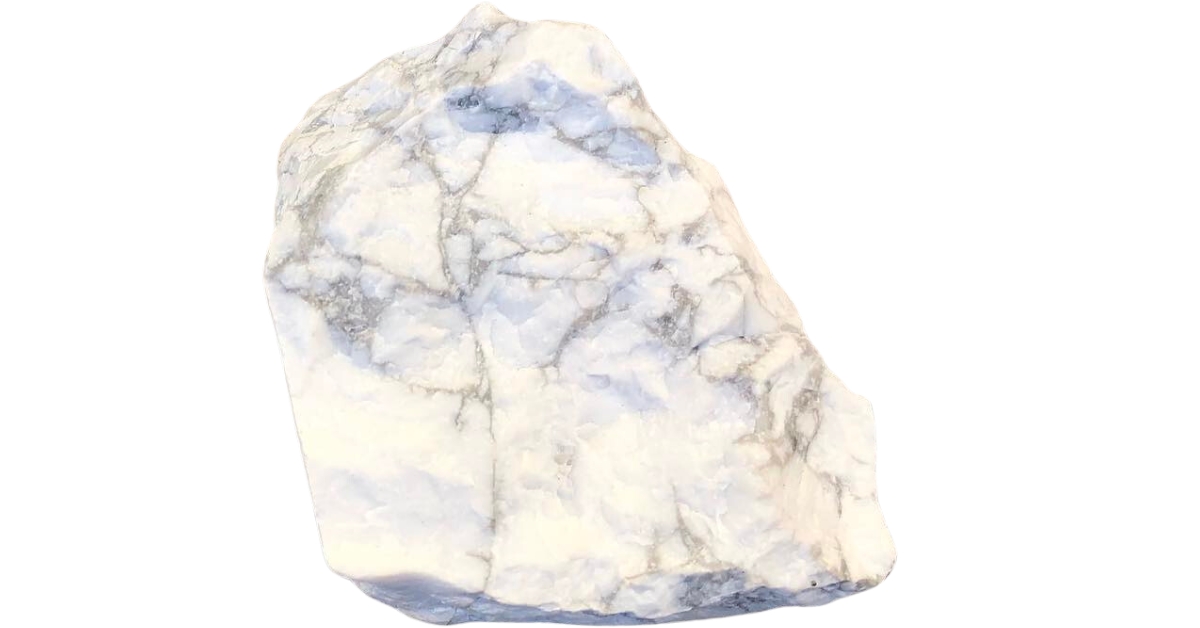While they may look similar at first glance, white turquoise and howlite have their own unique stories to tell, each filled with interesting characteristics and features.
You might have seen jewelry or decorative items labeled as “turquoise,” but did you know that not all turquoise is the bright blue color we often picture? White turquoise is a special variety of turquoise that has a lighter, more subtle hue.
On the other hand, we have howlite, a mineral that is often confused with white turquoise. Howlite is known for its distinct white color and gray veining, which gives it a unique appearance.
We’re going to explore the differences between white turquoise and howlite that set them apart and the similarities that bring them together. Let’s start our adventure into the colorful and captivating world of these two amazing minerals!
The Major Differences
This is where you might be surprised: despite looking confusingly similar, howlite and white turquoise have more differences between them. Below are the major ones that we found:
Color – White turquoise ranges from white to light blue with black or brown web-like patterns.
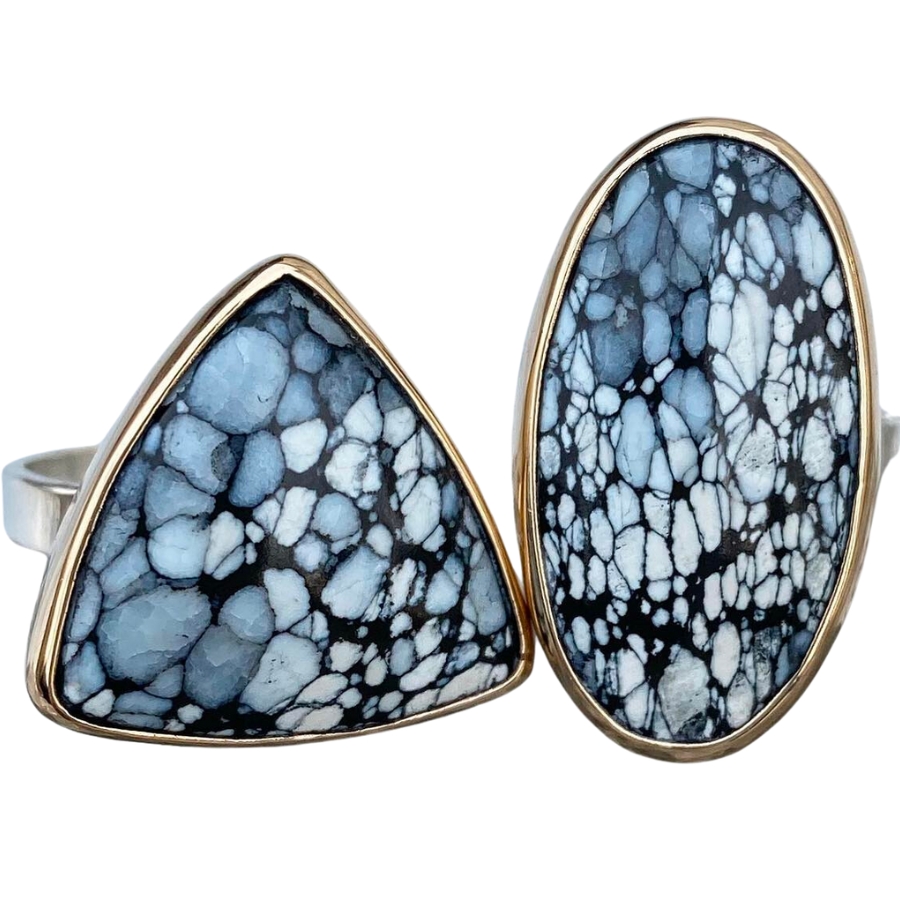
White turquoise isn’t the bright blue we usually see. Instead, it’s more of a soft white or pale blue. Sometimes, it even has a slight greenish tint.
The cool thing about it is the patterns it can have. These patterns, called a matrix, look like a web or veins, and they’re usually black, brown, or yellowish.
As for howlite, it’s often mistaken for white turquoise because they can look similar. But howlite is usually white or light gray and has neat gray or black lines running through it, creating a marbled effect. These lines are like a network of tiny veins.
Even though it’s usually white or gray, people sometimes dye howlite to look like other stones, including blue turquoise.
Luster – Howlite often appears more matte.
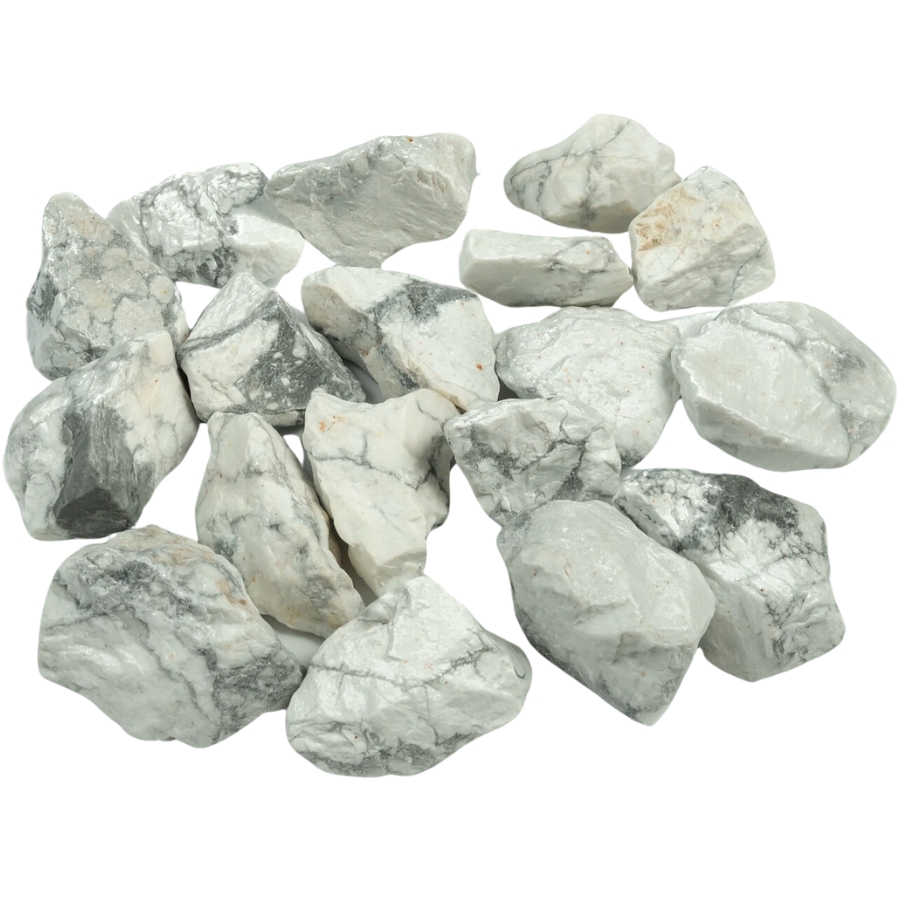
Luster is the way a mineral shines or glows when light hits it. White turquoise and howlite have different types of luster.
White turquoise has what’s called a waxy to subvitreous luster. It can look a bit like it’s got a thin layer of wax on it, giving it a gentle shine. Sometimes, it might even have a bit of a glassy look, but not too shiny.
This kind of luster makes white turquoise look smooth and almost soft. It’s not super shiny like a mirror, but it has a nice, subtle glow.
Howlite, on the other hand, is usually described as subvitreous to dull. It can range from having a little bit of that glassy shine to being more on the matte side.
It doesn’t reflect light as much as white turquoise does. It has a more understated appearance, so it might not catch your eye with a bright shine.
Crystal Structure – White turquoise forms in the triclinic crystal system.
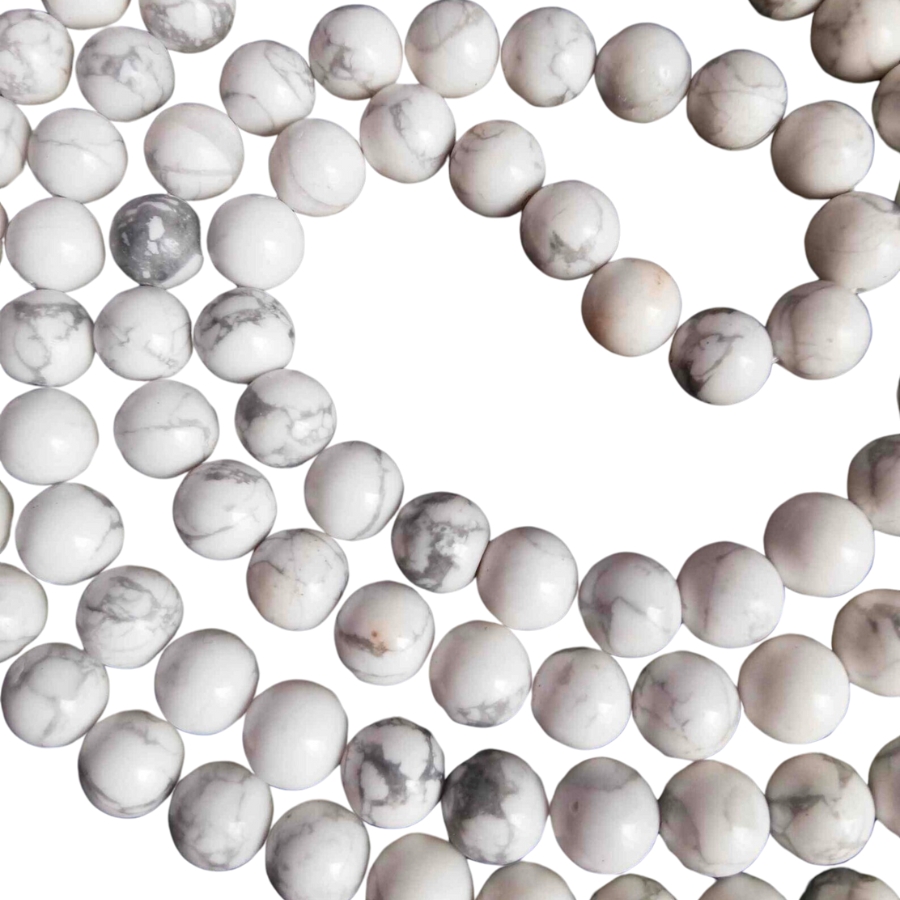
The crystal structure is the way the tiny pieces inside the mineral, called atoms, are arranged. It helps give each mineral its own special features, like shape and how it breaks.
White turquoise has a crystal structure that’s called triclinic. Imagine a room where none of the walls, floors, or ceilings are at right angles to each other— that’s kind of what the triclinic structure is like.
It’s a bit wonky and uneven, which makes white turquoise have an interesting and irregular shape.
Howlite, though, has a different structure known as monoclinic. In the monoclinic structure, it’s like having a room where two walls are parallel, but the others aren’t.
This makes howlite form in a way that’s a bit more orderly than white turquoise but still not perfectly even.
Composition – Howlite is a borate mineral.
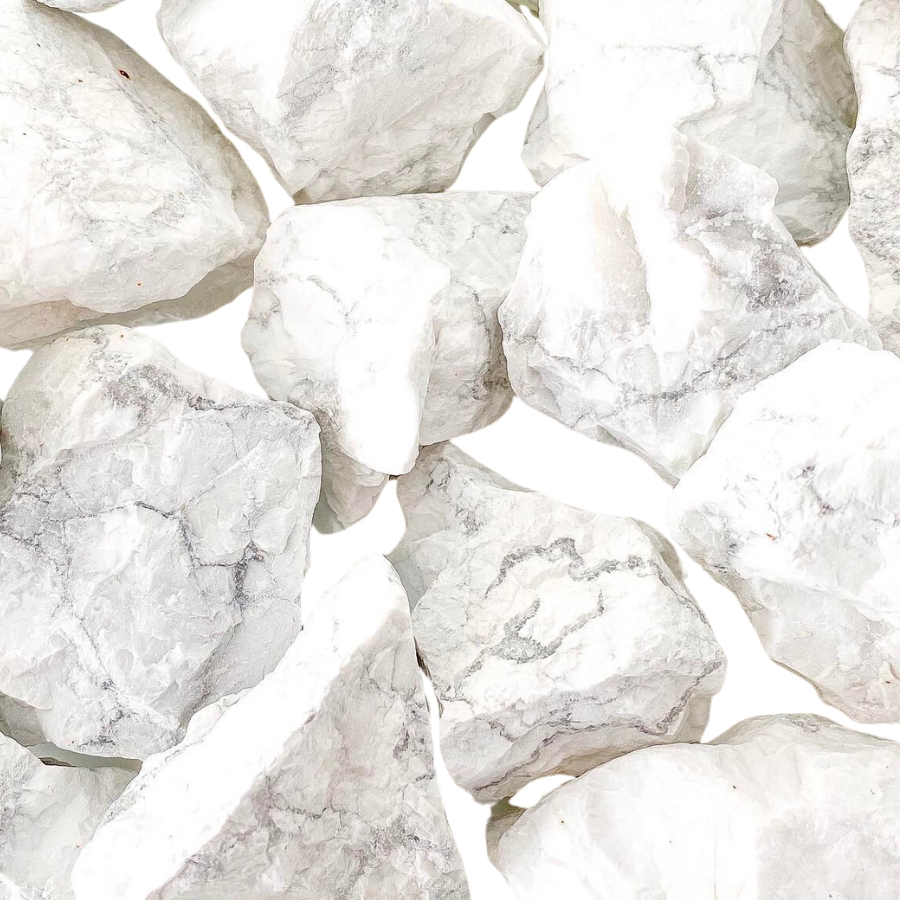
Composition is all about what a mineral is made of— the ingredients that come together to form it.
White turquoise is part of the phosphate family. It’s made with elements like phosphorus, oxygen, copper, and aluminum. These elements mix in a special way to create white turquoise.
Copper is also one of its key ingredients. It’s what usually gives turquoise its blue color, but in white turquoise, there’s less copper, which is why it’s lighter in color.
Howlite is different. It belongs to the borate family of minerals, so it’s made with elements like boron, calcium, hydrogen, and oxygen.
This rock is naturally white or light gray, and those colors come from the way its ingredients mix.
Formation – White turquoise forms through hydrothermal alteration of host rocks.
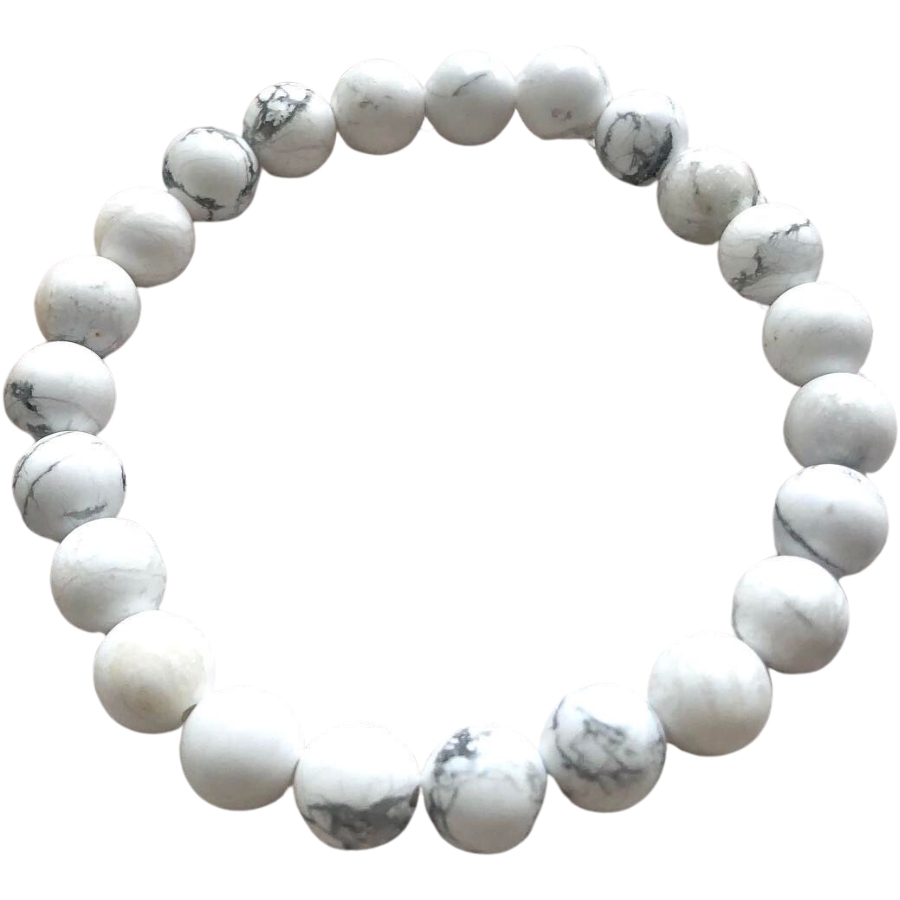
White turquoise and howlite have their own unique stories of formation, which is part of what makes them different from each other.
White turquoise forms in places where there are copper deposits. Over time, water that’s got a little bit of acid in it moves through these copper areas. As the water moves, it picks up tiny bits of copper and other stuff like phosphorus and aluminum.
Then, when conditions are just right, these elements come together and form white turquoise.
Meanwhile, howlite usually forms in deposits called evaporites when waters rich in elements like boron and calcium evaporate.
It leaves these elements to crystallize and become howlite. This process gives howlite its unique look and feel.
Density – Howlite feels heavier.
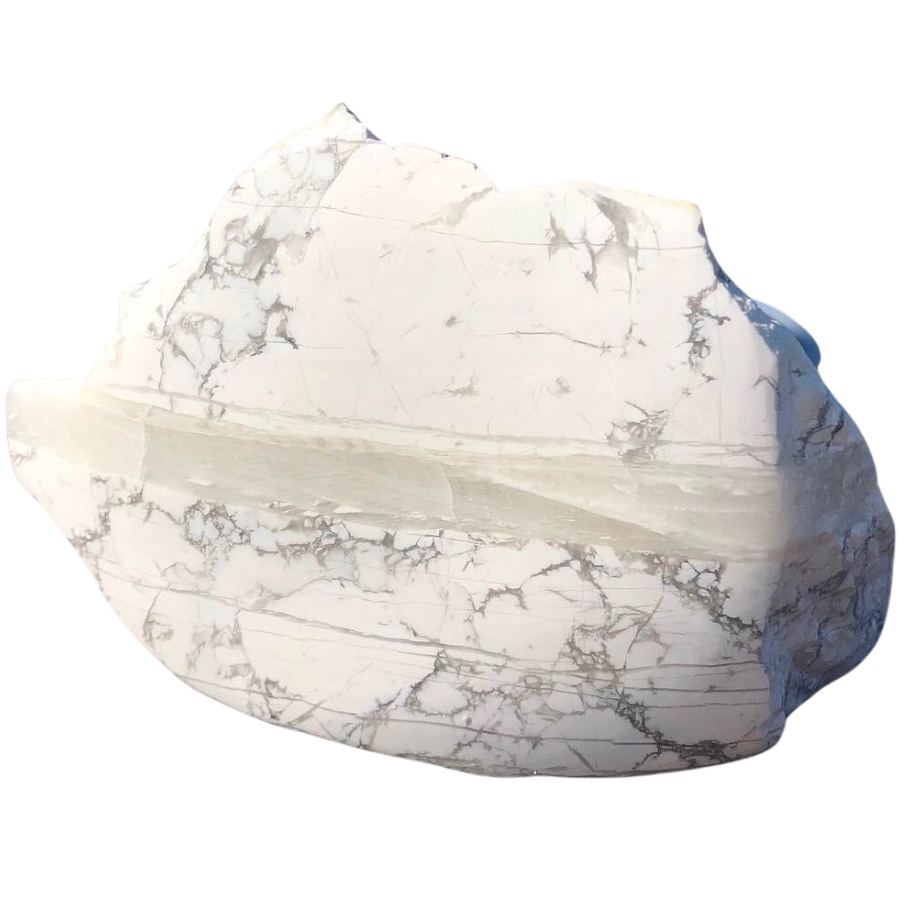
Density is a measure of how heavy something is for its size. Imagine holding two rocks that are the same size, but one feels heavier than the other. That’s because they have different densities.
White turquoise has a lower density compared to many other minerals. It’s not super heavy for its size. This is why white turquoise is easier to wear as jewelry or carry around because it won’t weigh you down.
Howlite, on the other hand, is a bit heavier for its size. It has a higher density.
If you had a piece of howlite and a piece of white turquoise that were the same size, the howlite would feel heavier in your hand.
Howlite’s extra weight gives it a different feel, which some people like, especially for things like paperweights or decorations.
Hardness – White turquoise is a bit harder.
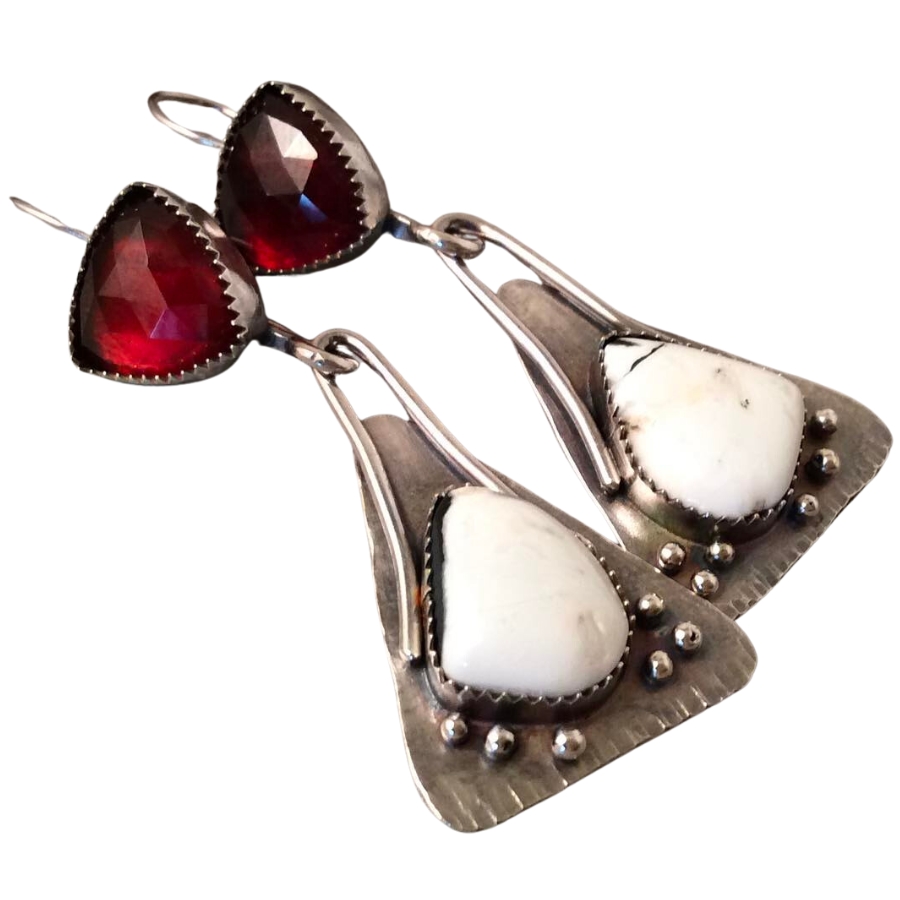
Hardness in minerals is all about how easy it is to scratch them.
White turquoise is in the middle when it comes to hardness. On the Mohs Scale of Hardness, where 1 is super soft and 10 is really hard, it scores around 5 to 6.
It’s not too soft, but it’s also not the hardest. It can get scratched if you’re not careful, so if you have a piece of it, take good care of it, especially if it’s in jewelry.
Howlite, on the other hand, is a bit softer than white turquoise. It scores around 3.5 on the hardness scale, so it’s easier to scratch.
If you press something sharp against howlite, it might leave a mark. Because of this, this rock needs to be treated gently.
Cleavage – Howlite exhibits poor cleavage in two directions.
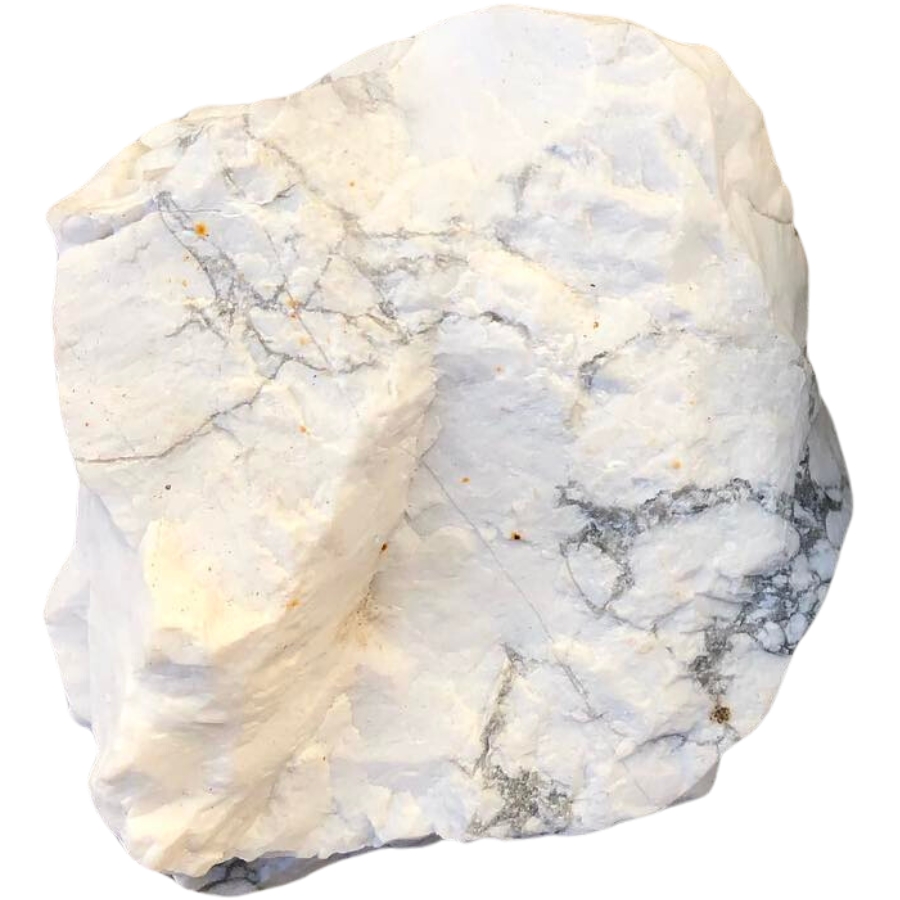
Cleavage isn’t about breaking something; it’s about how a mineral naturally breaks along certain lines.
White turquoise doesn’t have cleavage. It doesn’t break along neat, straight lines. Instead, it breaks in a random way, often with curvy or uneven surfaces.
It’s like breaking a piece of bread. You can’t predict exactly how it’s going to split. This random breakage gives white turquoise a kind of rugged, natural look.
Howlite, in comparison, has cleavage, but it’s not perfect. It has what’s called “poor cleavage,” which means it can break along certain lines, but the breaks aren’t always clean or straight.
It’s a bit like trying to break a cracker. Sometimes it splits along the lines, but other times it doesn’t. Howlite’s cleavage makes it a bit more predictable in how it breaks compared to white turquoise.
Streak – White turquoise has a bluish-white streak.
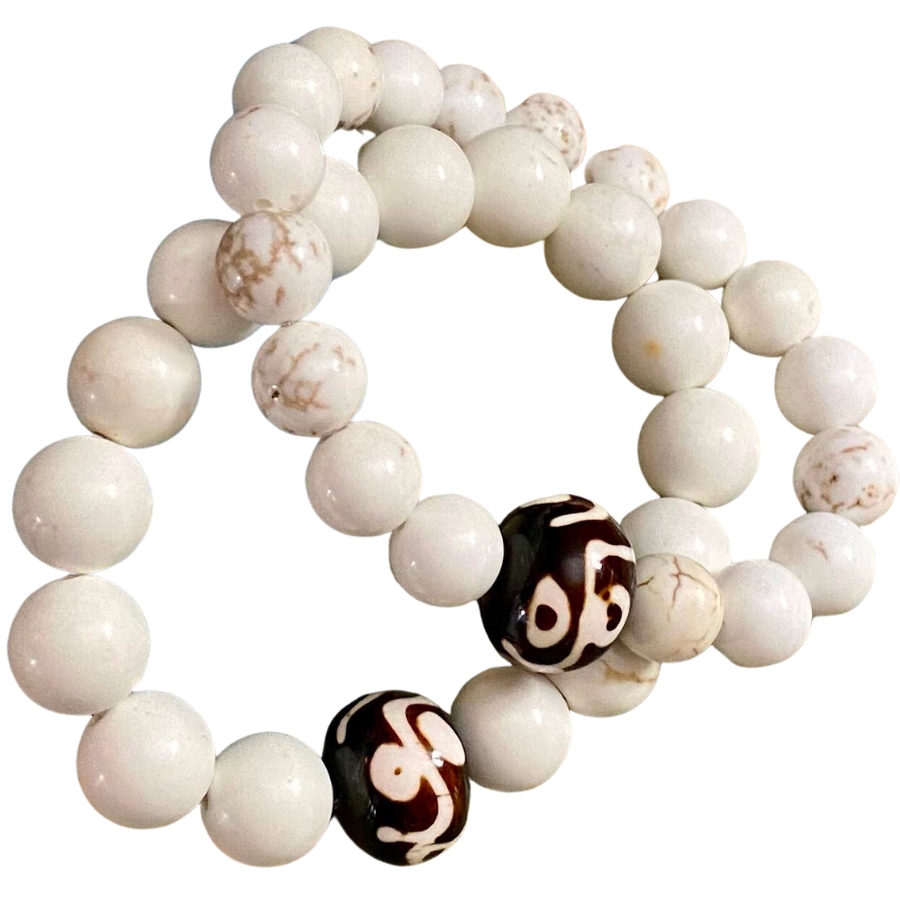
Streak is the color of the powder a mineral leaves behind when it’s rubbed on a rough surface, like a piece of unglazed porcelain.
White turquoise’s streak is usually a pale bluish-white color. It’s kind of like if you had a light blue crayon and you colored lightly on paper.
This light streak is different from the brighter or deeper colors you might see in the actual stone. The streak helps confirm if it’s the real deal or not.
Howlite, though, has a streak that’s just plain white. It’s like using a white crayon on white paper: the streak blends in because it’s the same color.
This white streak is a big hint that you’re looking at howlite. Even if it’s dyed to look like another mineral, the streak test will reveal its true color.
Fluorescence – Howlite fluoresces a blue to white color.
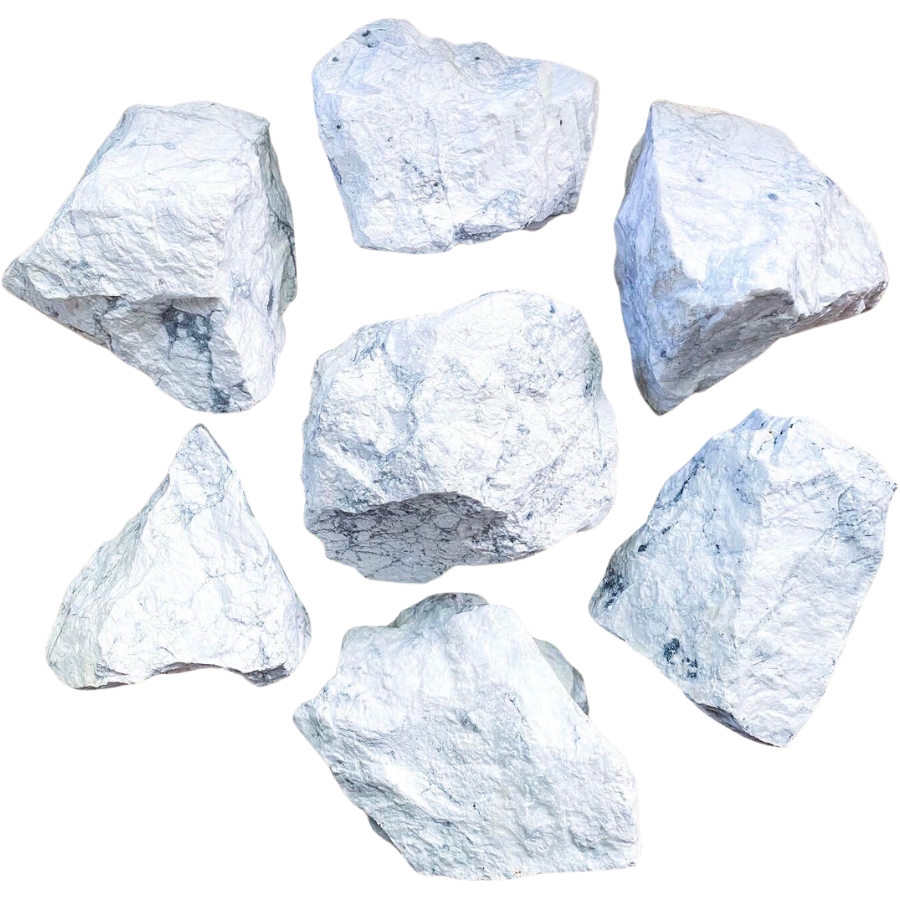
Fluorescence is when a mineral glows under ultraviolet (UV) light, which is a special kind of light that we can’t see with our eyes normally.
White turquoise usually doesn’t glow under UV light. If you shine a UV light on it, it pretty much looks the same as it does in regular light.
This lack of fluorescence is one of the things that help you know it’s white turquoise.
Howlite is different because it often does fluoresce, especially under shortwave UV light. It can glow a blue or white color.
This glowing feature of howlite is a cool way to identify it, and it’s fun to test it out and see the glow.
Location – White turquoise is found in various locations worldwide.
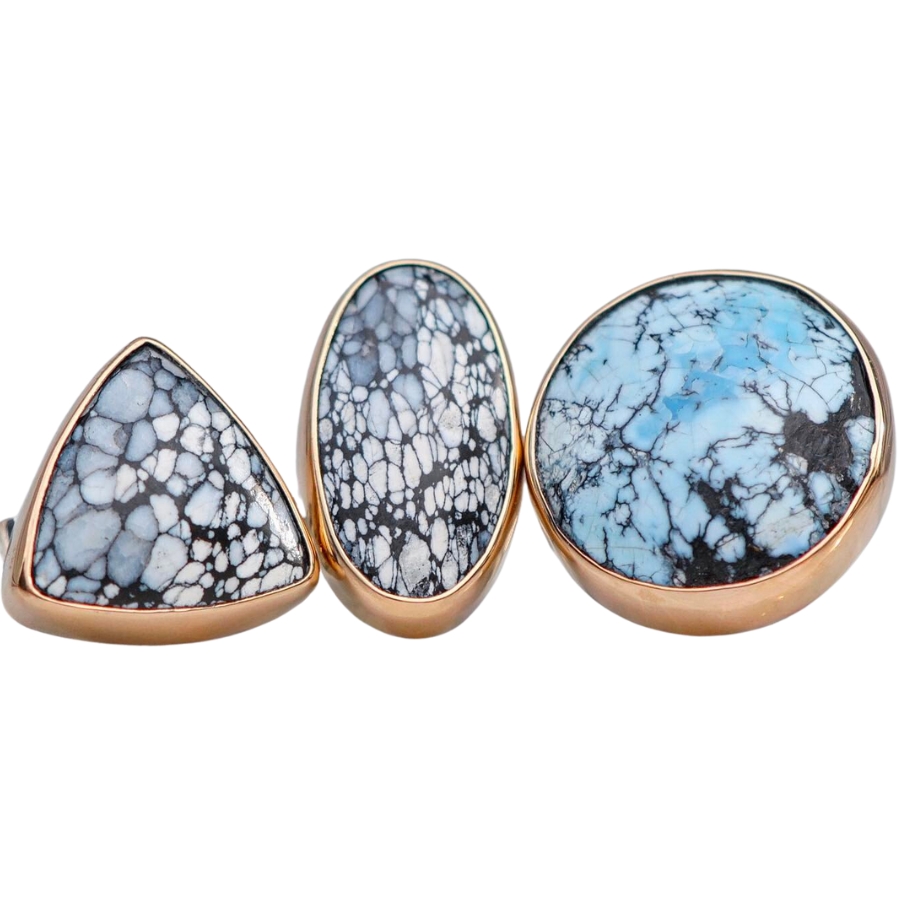
White turquoise is found in several places around the world. One of the best-known spots is the Southwestern USA, in states like Nevada, Arizona, and New Mexico.
But that’s not the only place you can find it. White turquoise is also found in other parts of the world, like China, Iran, and even Egypt.
If you want to know more about the best places to find turquoise, check out our guide.
On the other hand, the biggest place to find howlite is in Canada, especially in Nova Scotia. You can also find it in parts of the USA, like California, and in other countries like Turkey.
Howlite likes to hang out in different places than white turquoise, which helps give it its own unique style. Get to know the best rockhounding locations in this article.
Price – Howlite is more affordable.
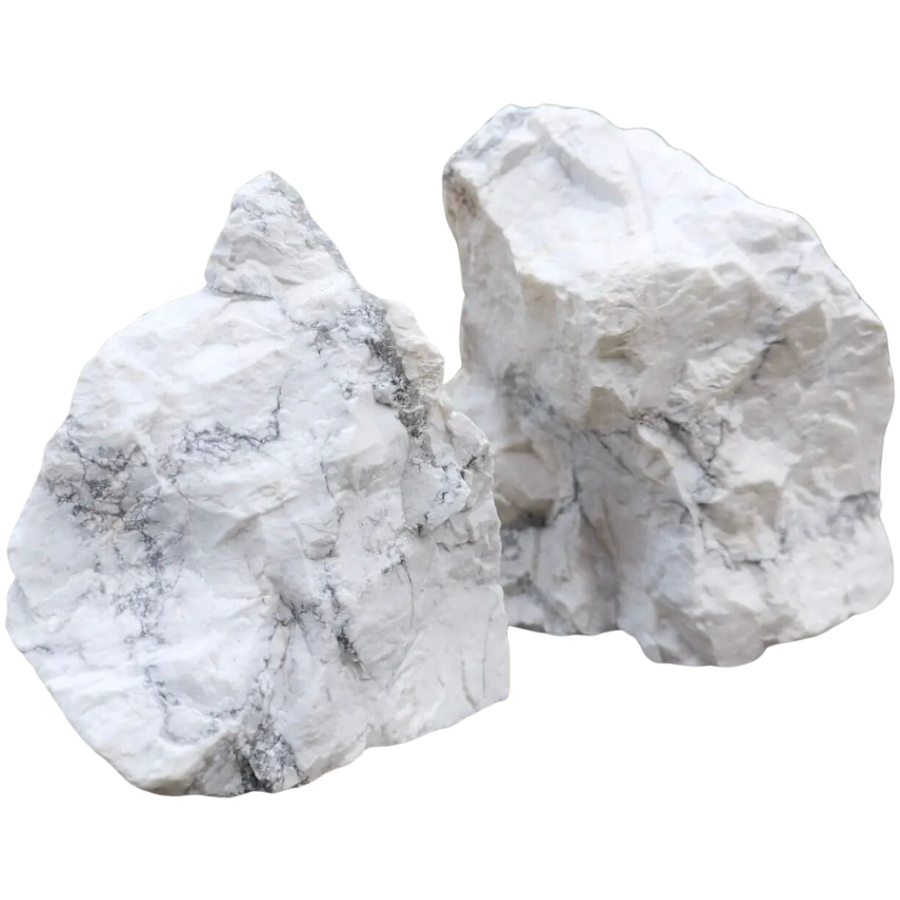
White turquoise is usually more expensive than howlite. This is because it’s rarer, and when something is harder to find, it becomes more special and valuable.
People like it for its beauty and uniqueness, especially for making jewelry. Since it’s not super common and a lot of people want it, the price of white turquoise goes up.
Howlite, on the other hand, is less expensive. One of the reasons is that it’s more common. You can find it in more places, and there’s more of it available. This makes it easier to get, so it doesn’t cost as much.
Howlite is often used as a substitute for turquoise because it can be dyed to look similar, and it’s more affordable.
This makes it a popular choice for people who want the look of turquoise without the higher price tag.
The Similarities
Now that we’ve gone through the many major differences between white turquoise and howlite, let’s proceed to their only similarities:
Magnetism – White turquoise and howlite are both non-magnetic.
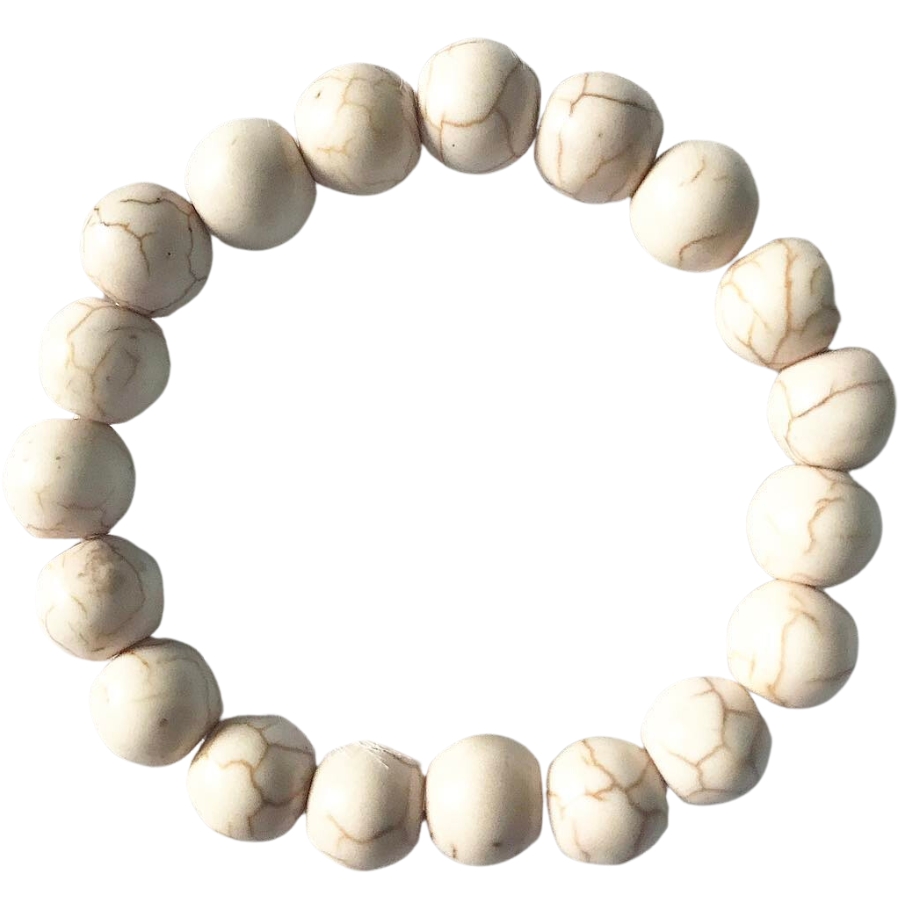
Magnetism is all about how some materials can be attracted to magnets. But not everything is magnetic, and that’s true for minerals too.
White turquoise and howlite are similar in this way— neither of them is magnetic. They both don’t stick to magnets.
This is because the stuff they’re made of doesn’t have the special properties that make things magnetic.
Whether you have a piece of white turquoise or howlite, if you put a magnet near it, nothing special will happen. The magnet won’t pull on the mineral or stick to it.
Conductivity – Neither howlite nor white turquoise is conductive.
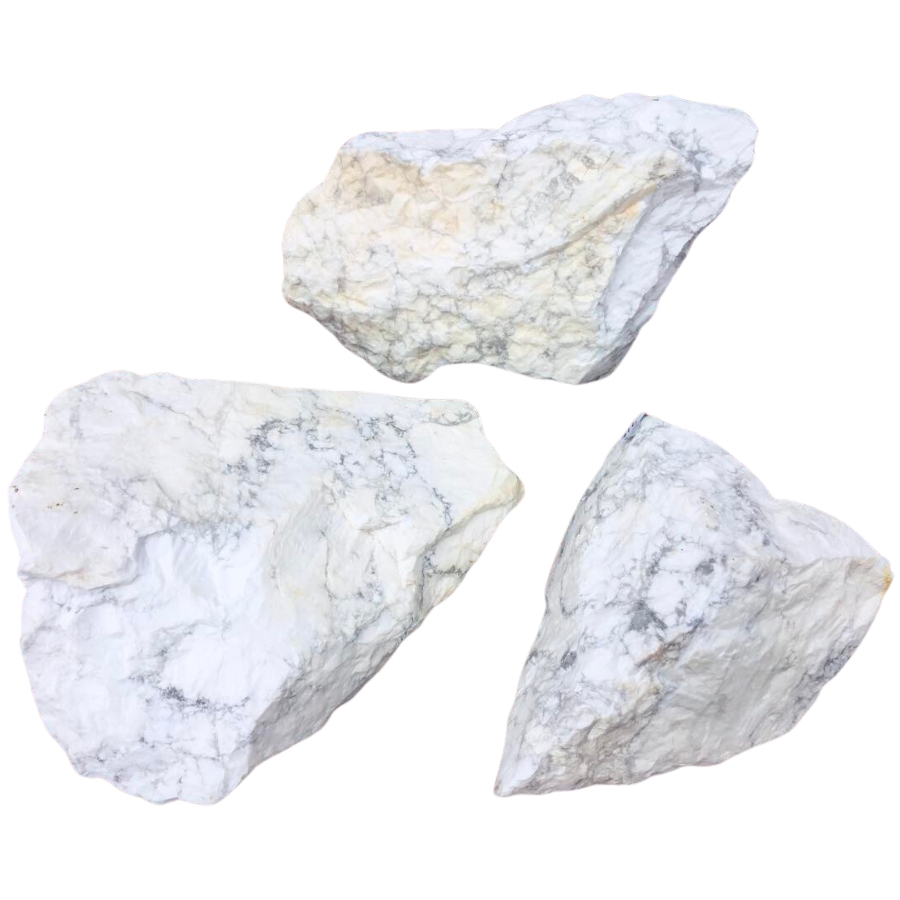
Conductivity is about how well something can carry electricity. It’s like a wire that lets electricity flow through it to turn on a light.
Some things, however, like rubber or plastic, don’t let electricity pass through them easily. White turquoise and howlite are similar in this way: both of them are not very good at conducting electricity.
These natural wonders are like insulators, which are materials that block electricity instead of letting it pass through. This means if you tried to use white turquoise or howlite in an electrical circuit, it wouldn’t work very well.
This is because of the way they’re made, with the types of atoms and how they’re arranged inside the mineral. It’s like a puzzle that doesn’t have any paths for electricity to travel through.
The Easiest Ways To Tell Them Apart
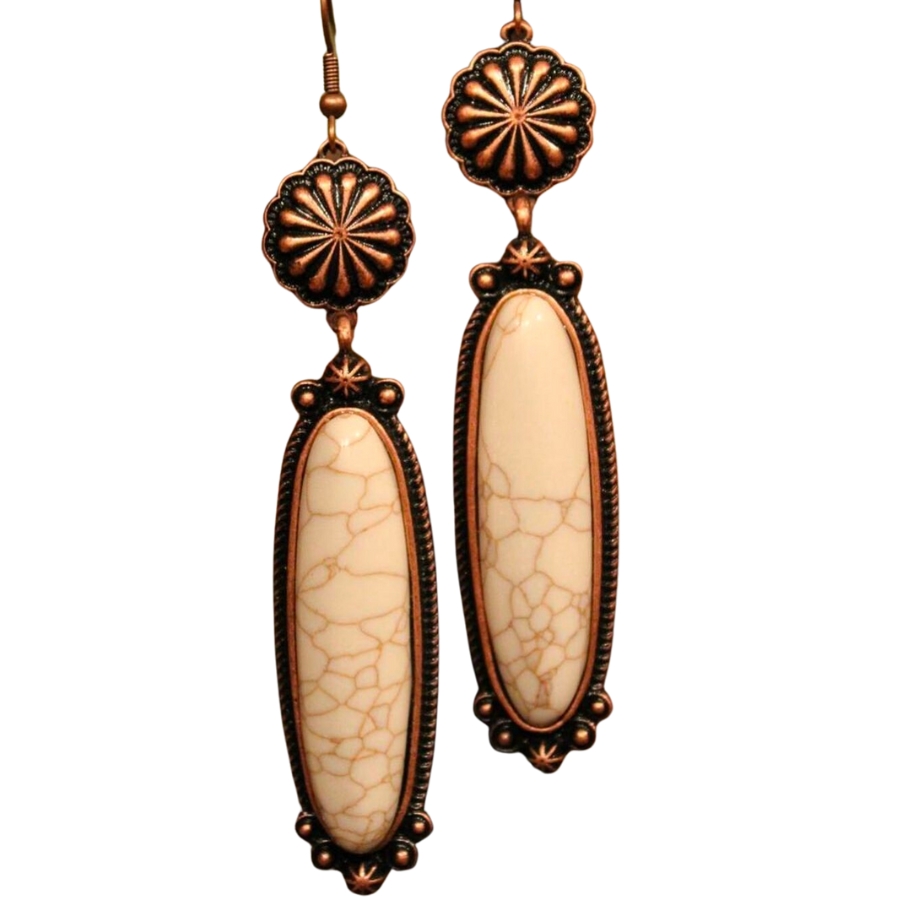
If you’re out in the field and you need some easily doable tips to tell between a howlite and white turquoise, below are simple tests you can do:
Look at the colors and patterns
Both white turquoise and howlite can have similar colors, but there are subtle differences and unique patterns that can help you figure out which is which.
White turquoise usually has a range of light colors, from pale blue to white. It has web-like patterns or matrices, which can be black, brown, or yellowish. The light blue tint and the distinct matrix pattern are key clues that it’s white turquoise.
Howlite, though, is usually white or light gray and has gray or black lines running through it. These lines create a marbled effect, making it look like it has tiny veins all over.
Do a streak test
White turquoise and howlite have different streak colors. To do this test, it helps if you have a streak plate or a piece of unglazed porcelain.
White turquoise typically leaves a pale bluish-white streak. This streak is lighter and has a hint of blue.
Howlite, on the other hand, leaves a streak that is just plain white. The white streak matches the typical color of this rock.
Look at it under UV light
UV light can make some minerals glow in cool ways. If you have a UV light (like a black light), you can shine it on the stone.
White turquoise usually doesn’t have a big reaction to UV light. If you shine a UV light on it, it will look pretty much the same as it does in regular light.
Howlite, though, often glows a blue to white color when you shine a UV light on it. This feature is helpful in identifying it, especially if you’re not sure what you’re looking at.

